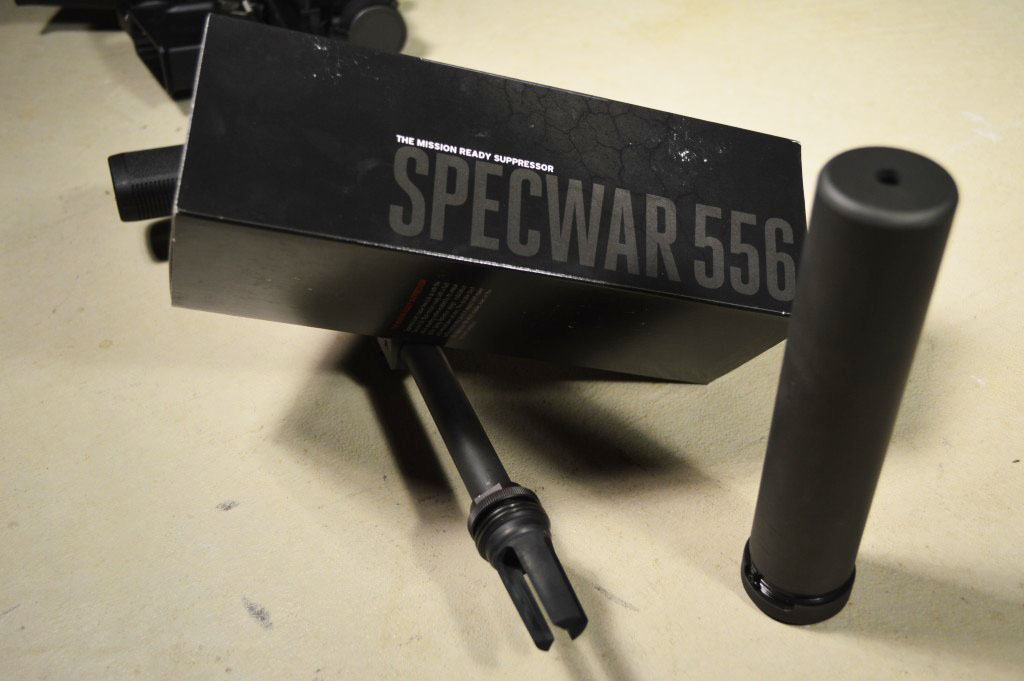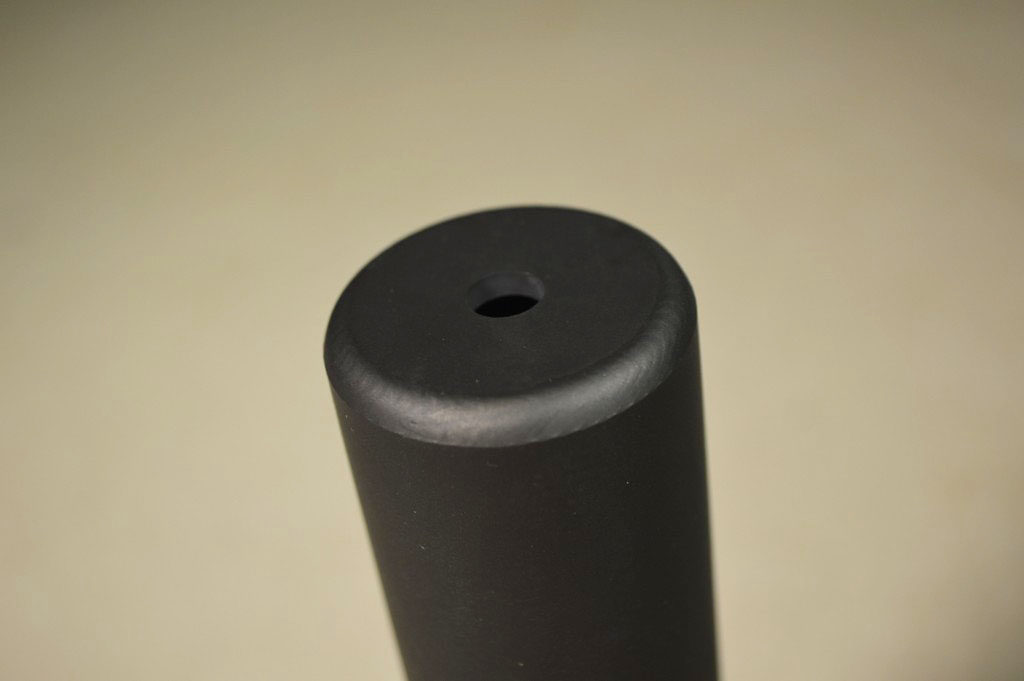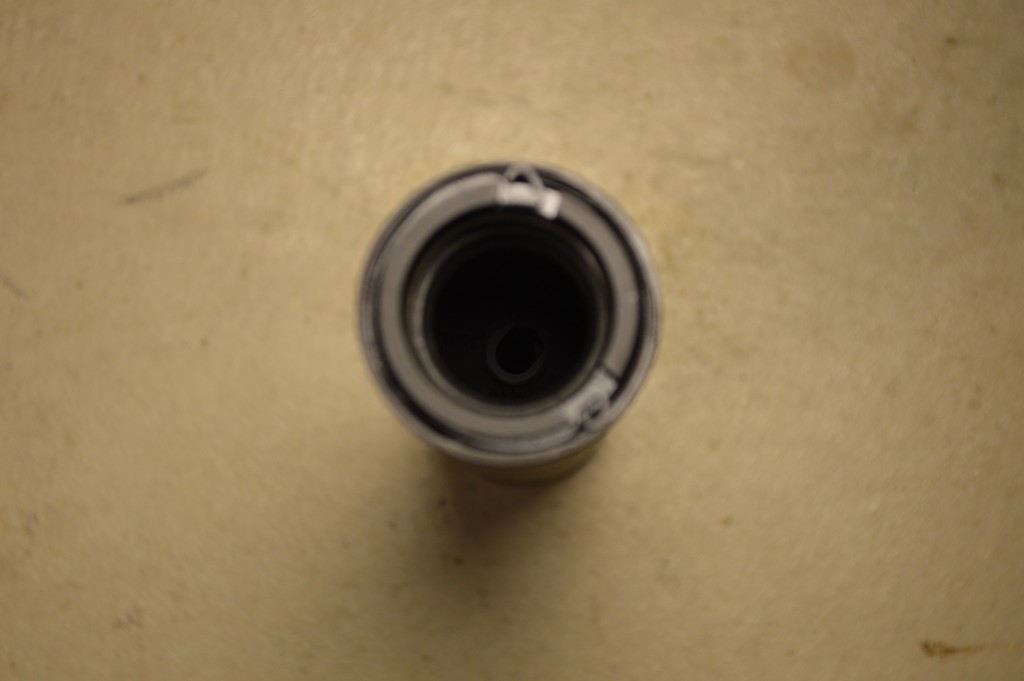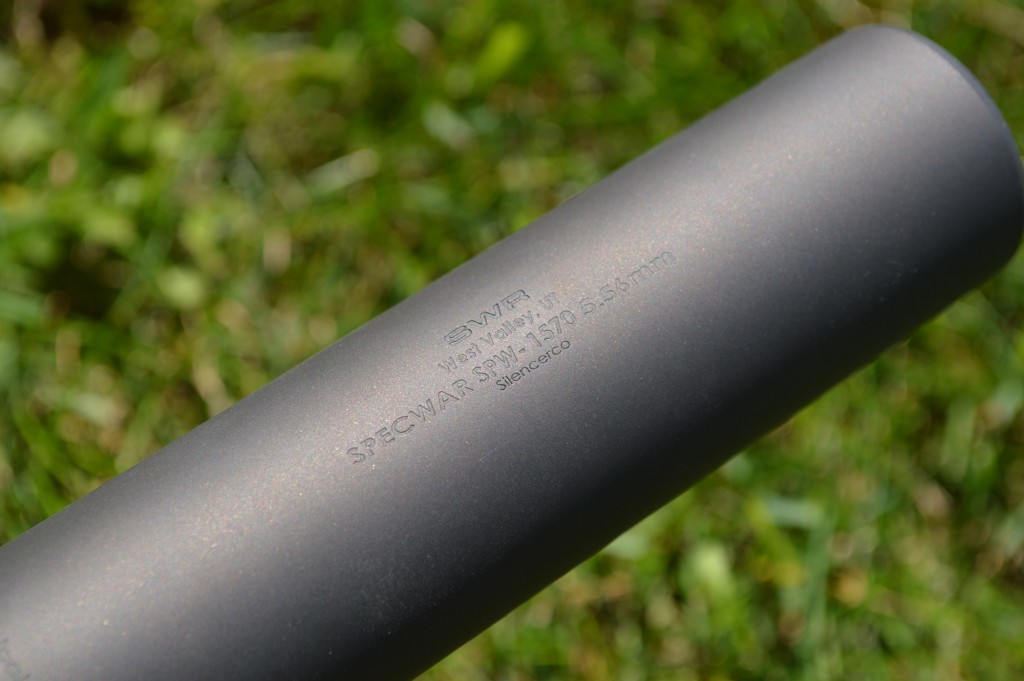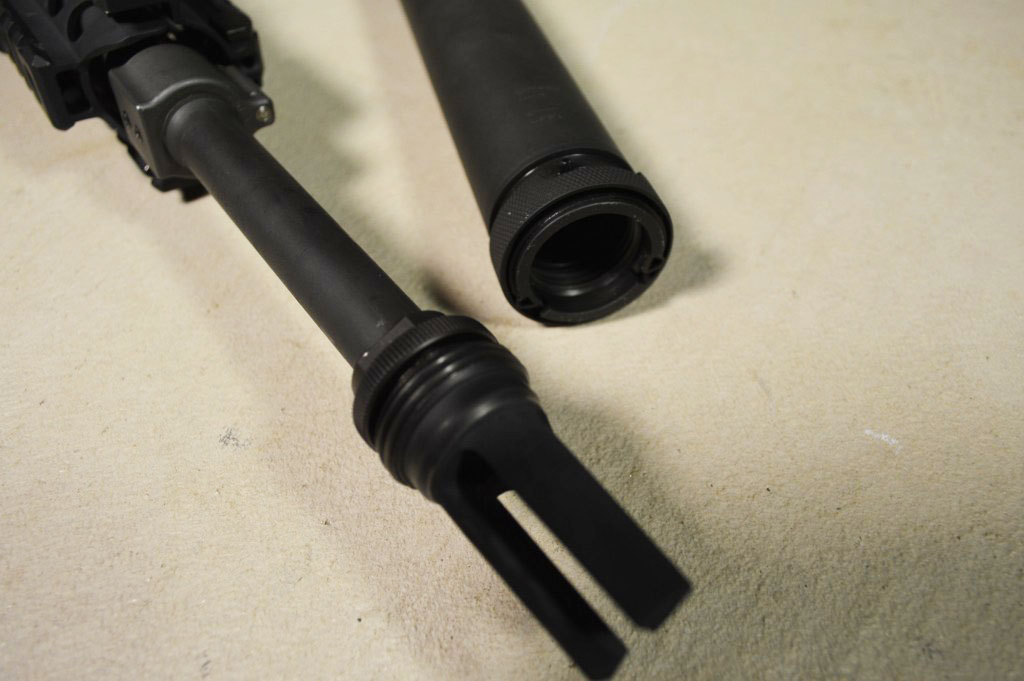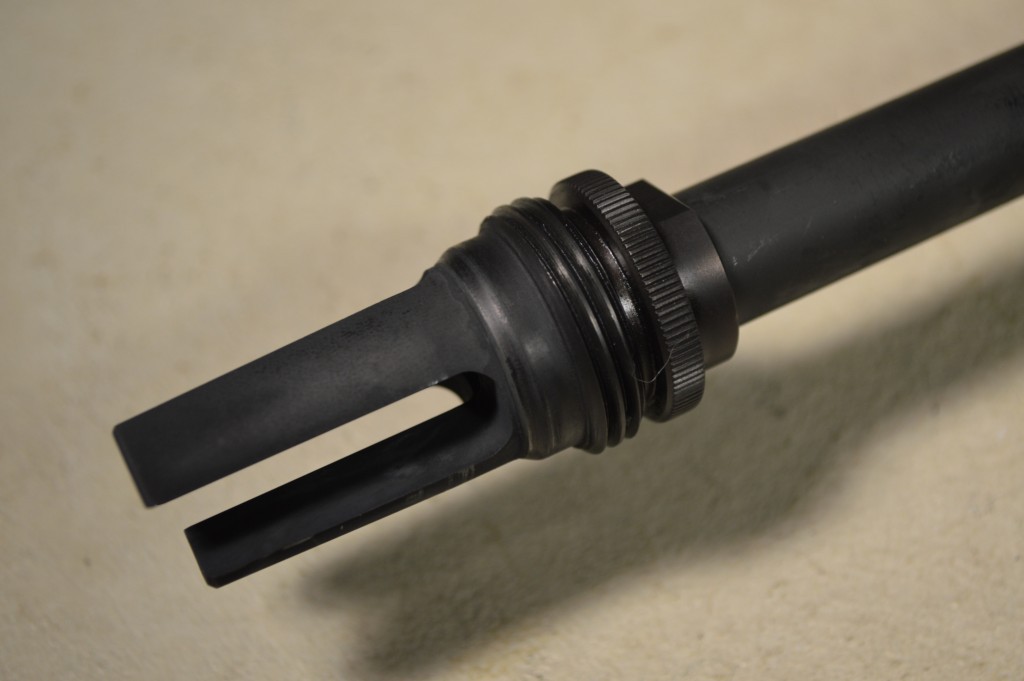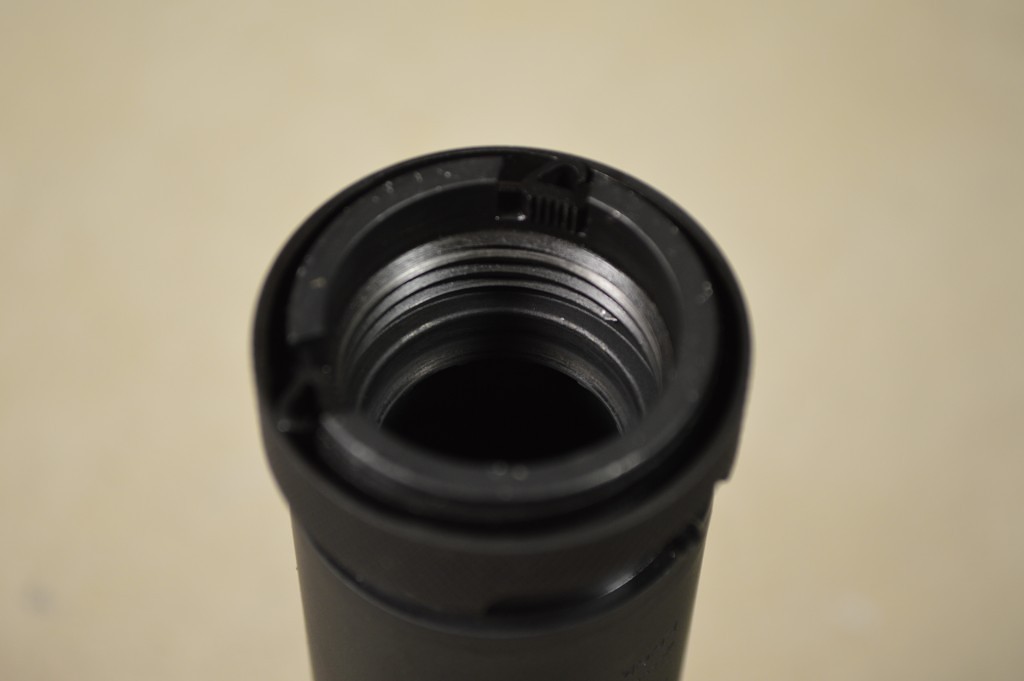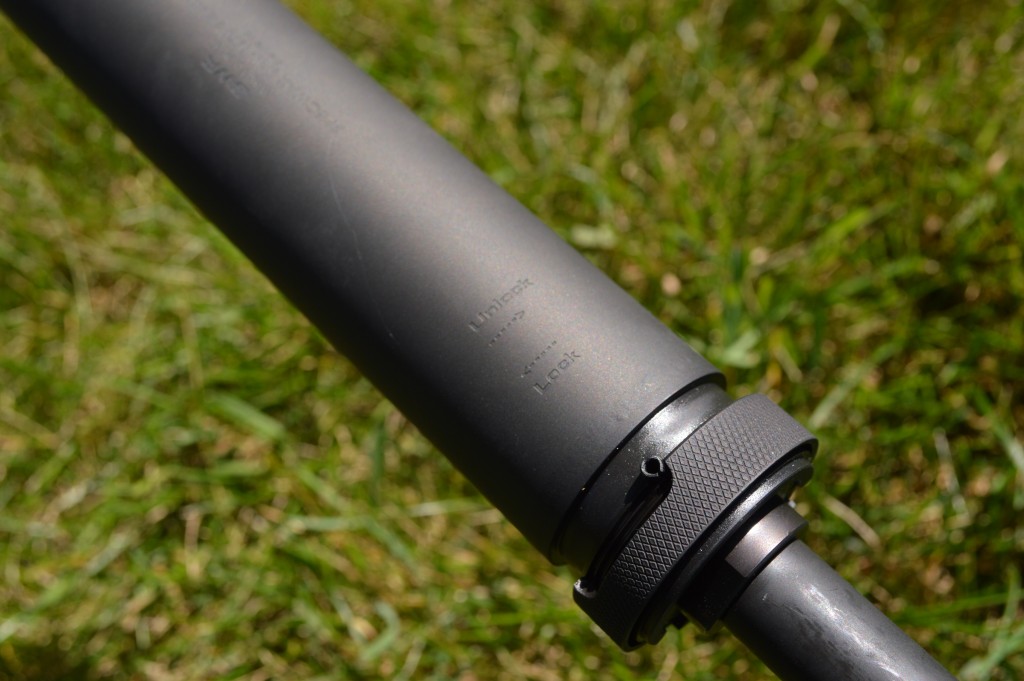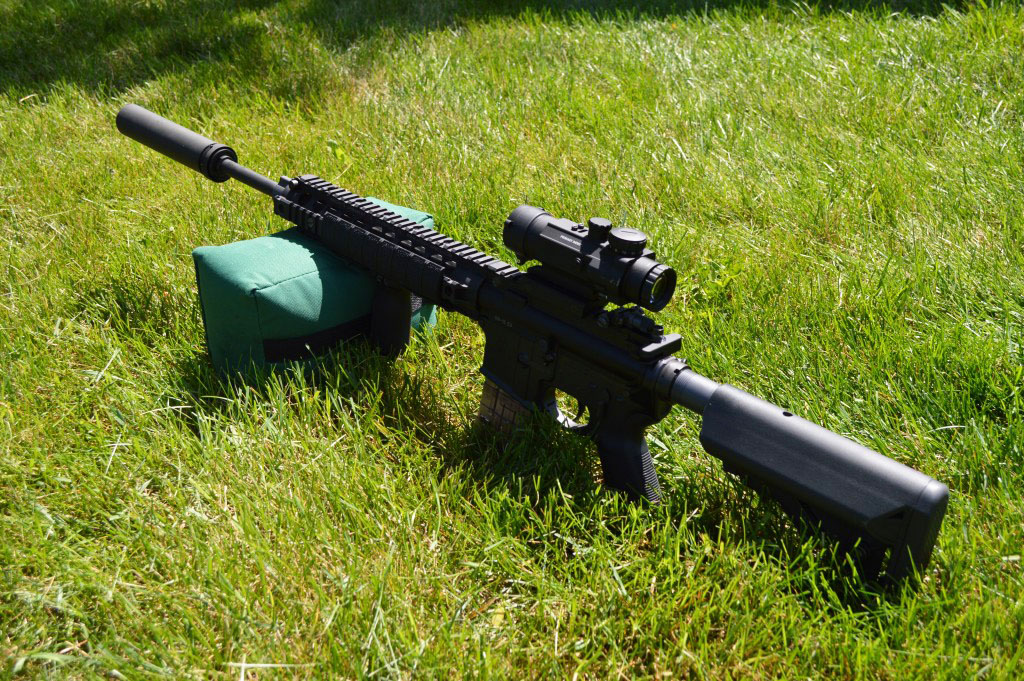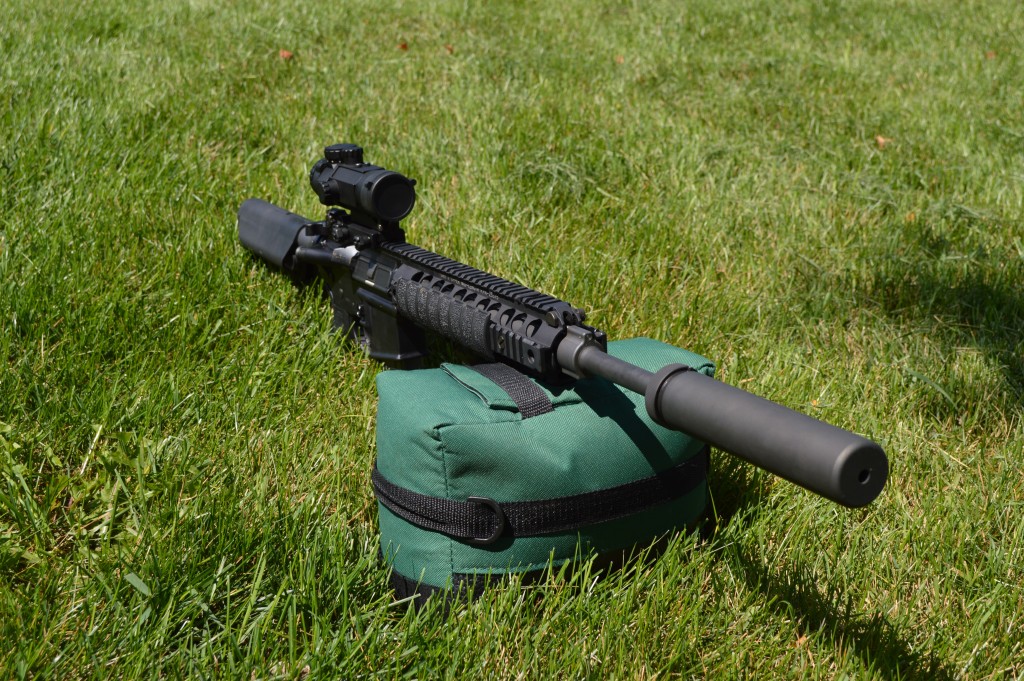SilencerCo Specwar 556 Review
When SWR released the Specwar 556 back in 2011, the market for high-performance silencers was much different than the one we enjoy today. At the time, most top-performing suppressors carried a $1,000 or higher price, and the selection of widely available options was mostly limited to a handful of companies. With the Specwar, SWR aimed to take the market by offering a lower-priced suppressor that shared many of the same features as more expensive flagship silencer.
Fortunately, after acquiring SWR in the summer of 2011, SilencerCo not only continued to produce the Specwar, but they also improved it by swapping the previous Inconel/stainless baffle stack for a fully Stellite one. SilencerCo also expanded the lineup to include a 7.62mm model and the shorter Specwar 556K. Now that the Specwar is a few years old, some readers may wonder how well it compares to its current peers. Have SilencerCo’s incremental improvements maintained the relevance of this high-value suppressor? Let’s take a look.
Design and Materials
Compared to other, similarly-priced options, the Specwar 556 takes top honors for durability. While almost all suppressors in this class feature stainless steel tubes, SilencerCo is the only company to offer a mid-range rifle silencer with Stellite baffles. Used in the production of M2 .50 BMG barrels, Stellite is quite possibly the hardest alloy used in firearm production and is more wear-resistant than competitors’ Inconel and stainless steel baffle stacks. To complement the Stellite baffles, SilencerCo opted for a 316L stainless tube that should be more heat resistant than lighter materials, like titanium.
The stainless tube employed by SilencerCo is fully welded on both ends, so the Specwar’s baffles are not user-serviceable. Welding the tube adds to the strength of the suppressor, but it does have some drawbacks. While a .22 LR round will fit through the suppressor’s bore, I strongly recommend against using rimfire ammunition with the Specwar. Over a relatively short period, the lead fouling caused by such ammo will build up inside the suppressor, adding weight and impacting performance. Generally, centerfire suppressors do not need the regular cleaning that rimfire silencers require, and the Specwar 556 offers no provisions for such maintenance.
Sometimes less is truly more when it comes to baffle design. Such is the case with the Specwar; all six baffles in the stack are simple cones with small ports clipped into the center borehole. If you’ve ever seen the baffles from SilencerCo’s Octane and Spectre/Warlock lines, the Specwar guts should look very familiar. Conical baffles were something that Henry Graham clearly favored and used with great results during his time at SWR and SilencerCo.
Cone-shaped baffles are excellent choices for centerfire rifle suppressors because they offer a considerable surface area to slow gasses, but also take up less room than “K” or Omega baffles. As the cones help to “scoop” gas away from the bullet, the ports allow some of the gas to travel into the next chamber unimpeded, creating turbulence within the tube. This “choppy” air traps and slows hot gasses by facilitating cross-bore flow so that by the time they exit the suppressor, these particles have cooled substantially and are less likely to generate the loud “bang” associated with expanding gasses. Unfortunately, cone baffles do little to remedy blowback, and even with a blast chamber that is over 3 inches long, the Specwar 556 is a gassy silencer. As particles impact the surface of each baffle, some deflect back toward the shooter. The funnel-shaped backside of each conical baffle facilitates rearward gas travel and promotes blowback. Fortunately, I was able to minimize the Specwar’s unpleasant side effects with the popular silicone fix.
Size
Sadly, suppressor enthusiasts are frequently forced to make a difficult tradeoff between weight and durability. While plenty of lightweight titanium suppressors are available, they typically are not rated for use on extremely short barrels or with fully automatic rifles. In order to withstand abuse from these hostile conditions, suppressor manufacturers must manufacture suppressor tubes and baffles using hard, dense alloys that quickly add up to a heavy package. Compounding the issue is that these suppressors must house a sufficient number of baffles and provide enough volume/length to adequately contain each round’s hot gasses for effective suppression.
With the above rules in mind, the Specwar 556 by no means breaks the mold. It is not an unwieldy suppressor, but the accessory certainly is not light. With a Trifecta muzzle device, the Specwar’s total system weight hovers around 23 ounces (the suppressor weighs 19 ounces by itself), and on a 16” or longer barrel, even the lightest rifles are going to feel a little front heavy. This is not to say that the Specwar 556 is unusable on a Title I (non-NFA) rifle, but there is no denying that a silencer as rugged as this one shines on shorter rifles.
For a suppressor with best-in-class performance, the Specwar is acceptably short. At 7.3” in total length, the Specwar 556 adds only 6” to a rifle compared to one with a bare A2-style flash hider installed. On a 10.5” short-barreled rifle (SBR), the suppressor brings the rifle to standard carbine length, but with the added benefit of significant volume reduction.
Finish
All suppressors in the Specwar lineup feature black oxide finish from the factory. In contrast to a painted finish, the black oxide is a treatment applied to the stainless steel tube and has an effective thickness of less than a micrometer. Though quality stainless steels are corrosion-resistant, they are not impervious to tarnishing and rust; the Specwar’s finish further enhances the tube’s anti-corrosion properties.
My experience has shown that black oxide scratches fairly easily. Out of the box, my tube had some handling rub marks that simply will not buff out. Unfortunately, none of the popular suppressor finishes respond favorably to high volumes of fire. Like a painted coating, the Specwar’s black oxide treatment will discolor if shooters dump 200 or 300 rounds through the silencer in rapid succession.
Mount
The Specwar series of suppressors use a proprietary mounting system that is integrated with the muzzle device and is known as Active Spring Retention, or ASR for short. ASR muzzle devices carry the Trifecta name and are constructed of blackened 17-4 stainless steel. Sadly, the Trifecta series is currently limited to a three-pronged flash hider and a traditional, three-port muzzle brake; SilencerCo offers no “flash-comp” combo device. To reduce the “pinging” sound exhibited by similar flash hiders (AAC’s Blackout), SilencerCo has smartly designed the Trifecta hider with prongs of three different lengths. Interestingly, the ASR flash hider still rings when loose, but once mounted on a rifle, I can assure you that the infamous “tuning fork” sound is non-existent.
Meanwhile, the muzzle brake is a no-frills sort of accessory that simply does what a muzzle brake is expected to do. It effectively reduces muzzle climb and provides a preliminary blast surface to protect the Specwar’s hearty Stellite blast baffle from abuse, especially on SBRs. The downside of the basic design is that the Trifecta muzzle brake exacerbates muzzle flash and concussion when used without the suppressor, so be sure to find a lonely corner of the firing line if you plan on using one at the range.
The ASR system itself is remarkably simple and works surprisingly well. Outwardly, the mounts should seem familiar to shooters who have used AAC’s 18T/51T/90T ratcheting system; the Trifecta devices also feature course primary threads followed by a multitude of tiny teeth cut circumferentially at the base of the mount. This is where the similarities end. The ASR system locks into these teeth in a substantially different manner than AAC’s design. Rather than ratcheting onto the mount, the Specwar (and other ASR-equipped suppressors) has a locking collar that twists approximately 75-degrees clockwise and presses two similarly toothed arms inside the suppressor against the teeth on the mount. For stability, a tapered face has been cut into the ASR muzzle devices just forward of the teeth. This surface mates with similar geometry inside the suppressor as the suppressor is threaded onto the mount and is so effective that the Specwar can almost be fired without engaging the locking collar (do not try this). Once locked, the Specwar has virtually no rotational play or wobble, and if used properly, the ASR teeth will not wear out like the ratcheting AAC, or YHM mounts sometimes do.
As excellent as the ASR system is, shooters will run into a serious roadblock when attempting to mount the suppressor underneath a railed handguard. Even though it is possible to twist the Specwar onto a recessed mount, activating the locking collar is unfeasible in such a tight space. Frankly, I would not use the Specwar 556 under a railed forearm as the suppressor can easily reach 500 degrees Fahrenheit after a magazine or so. Those looking to use its bigger brother, the Specwar 762 for tamer, subsonic .300 Blackout might need to look elsewhere if recessed mounts are a requirement.
Overall, the ASR system is one of my favorite suppressor attachment methods (behind the HK-style tri-lug). Compared to ratcheting mounts, it offers additional stability and tighter lockup. While other systems, like the MAAD assembly on SilencerCo’s Saker, allow for quicker and recessed deployment, the ASR is simpler and incredibly secure.
Range Report
As I’ve noted previously in this article, the Specwar 556 is a hefty silencer to hang off the end of any rifle’s barrel. This fact was especially apparent when I took the suppressor to the range for the first time and attached it to my SR-15 build. Usually, the SR-15 is an exceptionally light rifle and the Specwar did negate some of the advantages offered by KAC’s design.
Fortunately, I quickly forgot about the Specwar’s bulky nature. Shooting prone-supported and from a bench, the suppressor’s weight is mostly irrelevant. Moreover, the reductions in recoil and muzzle rise when using the Specwar 556 were substantial, even when paired with the soft-shooting SR-15. The faster cyclic rate/bolt speed caused by blowback was entirely countered by the Specwar’s ability to act as a large muzzle brake. Using the Specwar 556 transformed the AR’s recoil impulse from a quick punch to a longer push, similar to the difference between a 9mm handgun and a .45 ACP. Because of this, I was much quicker to return to target with the can mounted than without.
I have stated that the Specwar 556 is a gassy suppressor that generates more than its fair share of blowback. This is true, and my first range trip was a tear-filled one, thanks solely to the hot gas that sprayed my eyes after each pull of the trigger. While gas blowback will always foul the rifle’s receiver faster than shooting unsuppressed, the most noticeable effects of the phenomenon are easily addressed. By adding a small amount of silicone to the charging handle, I was able to completely eliminate these gassy bursts.
Sometimes, suppressors significantly alter a rifle’s point of impact (POI) to the point that large sight adjustments must be made when switching between suppressed and unsuppressed fire. Fortunately, the Specwar 556 has a remarkably minimal effect on my rifle’s shot placement. I’ve measured a 1 MOA shift directly left with the suppressor mounted. Since I will be shooting suppressed most of the time, I simply adjusted my Primary Arms ACSS Compact Scope to match the POI with the Specwar mounted. Because the difference is so small, I can still ring steel out to 300 yards with no windage or elevation adjustment. Assuming a properly torqued mount, prospective buyers should expect similar changes, but the direction of the shift will vary from example to example and rifle to rifle.
For many of us, the sound reduction is ultimately the most important aspect of shooting suppressed. I am pleased to report that the Specwar 556 performs very well in this regard. While I have yet to receive numbers from Silencer Shop, Military Arms Channel metered the Specwar 556 at 133 dB from 1 meter left of the muzzle. I have tested my Specwar 556 next to an AAC M4-2000 (a 131-135 dB suppressor at the muzzle, according to Silencer Shop) and can confirm that both suppressors sound very similar.
At ear, the Specwar does seem noticeably louder than its muzzle report, and likely rates in the 140-142 dB range from the shooter’s perspective. Higher measurements at the shooter’s ear can be attributed to gas blowback and ejection port noise and are less common when using an over-bored suppressor (example: 7.62mm suppressor with 5.56mm ammunition). As I’ve indicated, blowback is an issue for the Specwar, and the “whoosh” of air as it exits the rear of the rifle is audible. Essentially, shooting standard 5.56mm loadings through the Specwar 556 sounds just slightly quieter than firing an unsuppressed .22 LR with supersonic ammunition. The tone of the suppressor is less pleasing than larger cans, but the suppressed “tiss” is much more tolerable than an unsuppressed rimfire. Overall, the Specwar’s meter numbers are in line with other top-quality 5.56/.223 suppressors on the market.
Conclusion
While I have been critical of the Specwar 556 at times during this review, make no mistake, it is an absolutely fantastic suppressor. If I were looking to purchase a suppressor for dedicated use with Title I rifles, I might feel more motivated to pay a few hundred dollars more for a lighter titanium silencer. When used solely with lower muzzle pressures from 16″ and longer barrels, the longevity of titanium suppressors and Inconel/stainless baffles likely would not be a concern. However when I grabbed the Specwar 556 last November, my top priorities were suppression, durability, and versatility, in that order. I feel that the Specwar 556 checks all three boxes and I have no reservations about eventually using it with a 10.5″ SBR.
For a design that has a few years under its belt, the Specwar is still impressively relevant. In fact, I am inclined to suggest that it is the best 5.56mm suppressor under $750, but the competition in this category is very tight. Even so, a quick-attach suppressor with excellent sound reduction and a Stellite baffle stack is practically guaranteed to be a winner. Couple these features with an agreeable price point ($629 at Silencer Shop as of publication) and it is easy to see why so many shooters are pleased with the Specwar 556.
An information security professional by day and gun blogger by night, Nathan started his firearms journey at 16 years old as a collector of C&R rifles. These days, you’re likely to find him shooting something a bit more modern – and usually equipped with a suppressor – but his passion for firearms with military heritage has never waned. Over the last five years, Nathan has written about a variety of firearms topics, including Second Amendment politics and gun and gear reviews. When he isn’t shooting or writing, Nathan nerds out over computers, 3D printing, and Star Wars.

